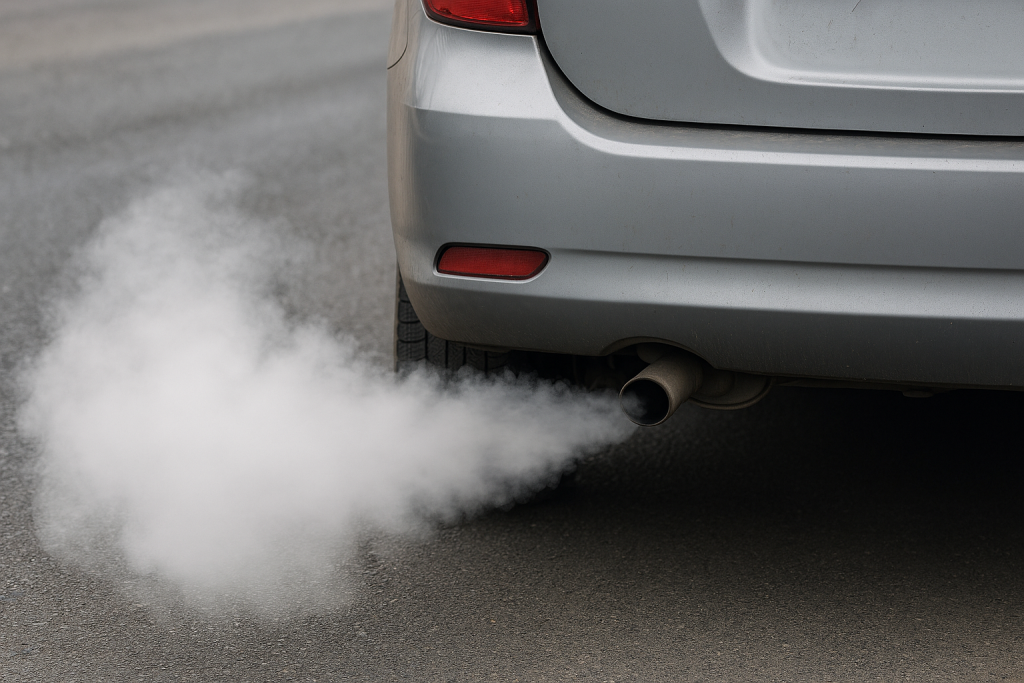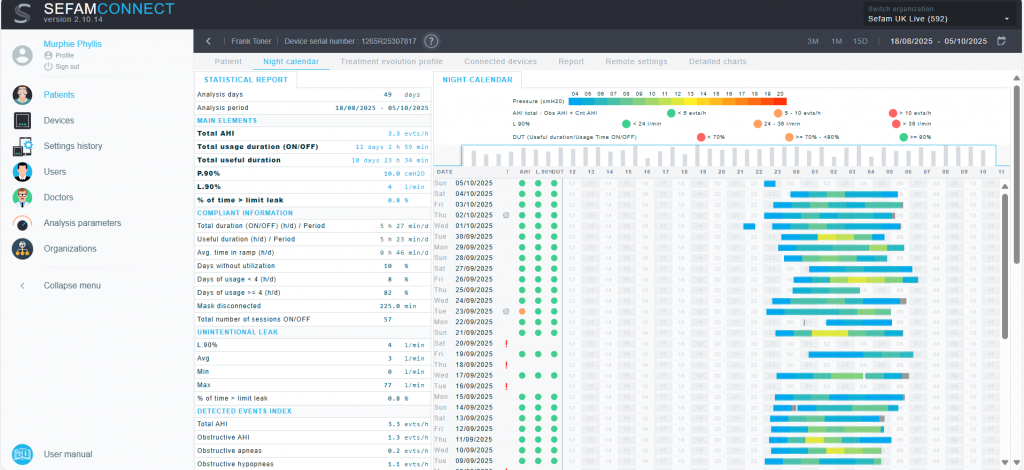As healthcare innovation and technology continue to advance at pace, remote monitoring is not only revolutionising patient care, it’s also making a meaningful contribution to environmental sustainability and helping our planet to breathe a bit easier. In the case of Sleep Apnoea particularly with CPAP therapy, remote monitoring offers a range of environmental benefits that may often go unnoticed. Let’s take a closer look at how this shift toward digital care is helping build a more sustainable future.
Less need to Travel means – Less Air Pollution from Burning Fossil Fuels
In the past managing people with sleep apnoea often required multiple in person clinic visits for diagnosis, device setup, and follow-up. Remote monitoring changes the whole landscape by allowing care to be delivered at home or in a homely setting. This significantly reduces travel-related carbon emissions, especially for those in rural areas or with mobility challenges 1-2.

Streamlined Sleep Studies
In-lab polysomnography (PSG) tests are resource-intensive and more expensive, requiring patients to stay overnight in specialised facilities equipped with multi channel advanced diagnostic devices and staffed by trained personnel. Polysomnography setups consume significant amounts of energy and materials—from single-use sensors and paper documentation to climate-controlled rooms and continuous monitoring systems. In contrast, home-based diagnostics and remote CPAP monitoring offer a more sustainable alternative. The Nice guidelines recommend novel home sleep apnoeas testing devices that reduce the need for travel, minimise energy consumption, and rely on reusable or digital tools, helping to lower the overall environmental carbon footprint of sleep apnoea care delivery in the NHS 3-4.
Digital Data, Not Paper Trails
Remote CPAP systems securely transmit patient data wirelessly via cloud based software to clinicians negating the need for printed reports. This digital approach not only streamlines clinical workflows and enhances efficiency, but also significantly reduces paper consumption and the environmental impact associated with single-use batteries and other disposable components 5-6.
Smarter, Greener Devices
Modern CPAP machines are designed to be more energy-efficient and compact reducing the environmental footprint of sleep apnoea care. The Néa device by Sefam is foamless, very quiet and compact 7. Sefam UK is committed to ethical procurement: We ensure fair, transparent processes, prioritise suppliers with strong labour standards and sustainability practices, and avoid conflicts of interest. Our approach supports local businesses, promotes eco-friendly initiatives, and undergoes regular reviews to maintain integrity and social responsibility across our supply chain.
Cloud-Based Connectivity and Sustainability
Remote monitoring platforms like Sefam Connect use cloud based systems, many of which are powered by renewable energy 8. Compared to traditional server setups, these platforms offer a cleaner, more scalable solution for managing patient data.
The Cloud based Software allows specialities and multidisciplinary teams to ensure that communication across the patient pathway from diagnosis to treatment initiation and follow up is smooth and transparent.
The software does provide a very detailed report on all residual events including central and obstructive hypopnoeas and treatment emergent central sleep apnoea can be seen early and a clinical management plan implemented for these cases where they arise.
A recent study shows that CPAP manufacturers use different rules to calculate device-reported AHI, which can significantly affect telemonitoring alerts. Excluding central hypopneas reduced alerts by 50%, and excluding events during ramp or leaks reduced alerts by 20%. These inconsistencies may impact clinical decisions and patient safety and the authors recommend including all detected events and call for international standardisation of AHI calculation to ensure accurate monitoring and better care 9.
From a patient and person centred care perspective, resupply of consumables directly to the patients place of residence is another area that supports environmental sustainability where this negates the need for the patient to travel to collect consumables from a hospital clinic. Direct supply to patients homes also supports more sustainability the supply chain.

Better Adherence, Less Waste
Remote monitoring helps clinicians intervene early when issues arise, improving therapy adherence. This means fewer unused devices, less packaging waste, and more effective treatment, all contributing to a more sustainable healthcare model.
Final Thoughts
Remote monitoring in sleep apnoea isn’t just a win for patients, it’s a win for healthcare providers, the NHS as a whole and the planet. By minimising travel, optimising resource use, and embracing digital innovation, we’re shaping a healthcare system that prioritises both patient convenience and environmental sustainability.
The NHS is having to do more with the same resources and no new financial investment and having efficient remote care pathways that are person centred and delivered closer to patients homes fits with the NHS 10-year plan 10. Remote technology is an enabler, improving access to care, enhancing clinical efficiency’s, supporting personalised care and sustainability and empowering patients to be at the centre of their sleep medicine care pathway. Telemonitoring releases time to care and digital resupply solutions such as Sefam resupply also release time to care in bust sleep medicine services.
References;
- Remote consulting with telemonitoring of continuous positive airway pressure usage data for the routine review of people with obstructive sleep apnoea hypopnoea syndrome: A systematic review – PubMed
- Sleep apnoea and telemonitoring | European Respiratory Society
- Overview | Home-testing devices for diagnosing obstructive sleep apnoea hypopnoea syndrome | Guidance | NICE
- Use of polysomnography and home sleep apnea tests for the longitudinal management of obstructive sleep apnea in adults: an American Academy of Sleep Medicine clinical guidance statement | Journal of Clinical Sleep Medicine
- Environmental benefits of digital over paper: A wayfinder case study – NHS England Digital
- Analysis of the effect of digital hospital efforts on paper savings in inpatient procedures and on the duration of nursing care services – PMC
- Sefam CPAP and APAP Devices | S.Box & Néa Sleep Therapy
- Amazon: All our operations now run on renewable energy – DCD
- 12931_2025_Article_3324.pdf
- NHS England » Fit for the Future: 10 Year Health Plan for England
